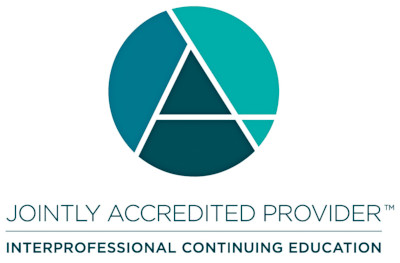Activating the Nexus in Real-Time to Reduce Disparities
Health care is in trouble. COVID-19 has reminded us of unacceptable disparities across many vulnerable groups. Providers are exhausted and choosing to retire and/or seek other careers. The National Academies are producing a plethora of reports on how to improve every component of our challenged health care system, especially primary care and long-term care. What better time to activate the interprofessional nexus to demonstrate its impact on solving important problems in real time?
Objectives
1. Provide examples of activating the Nexus to reduce health disparities.
2. Share successful strategies for embedding interprofessional student teams in active practices.
3. Propose next steps in scaling Nexus interventions to improve equity and reduce health disparities.
Over the past two years, during COVID, our academic-clinical partnership set out to transform primary care first by seeking diverse stakeholder input on a vision for the future of primary care and then implementing small tests of change in primary care clinics to actualize the vision. The small tests of change involved embedding interprofessional student teams with practice teams to address unmet needs of at-risk patients and making the EHR and distance technologies more accessible. Our outcomes are promising. Students loved the experience, 95% of 62 patients receiving student team interventions recommended them for other patients and providers and their clinical teams wanted more students.
At this grassroots level of implementation, we learned embedding student teams in active primary care clinics requires involvement and buy-in from the whole Nexus. Synchronizing student schedules, a problem that everyone confronts in IPE, is just the tip of the iceberg. We generated an 8-page list of lessons that included significant challenges in preparing students to work together to care for at-risk patients, gaining permission for students to access distance technologies, and integrating student interventions for at-risk patients into daily workflows. Students, faculty, providers, patients and administrators identified numerous opportunities for improvement and importantly, jumped in with solutions. We know that others who attend the Nexus Summit are similarly refining their models and leaping over the old barriers of IPE to reduce disparities and solve other important challenges.
In support of improving patient care, this activity is planned and implemented by The National Center for Interprofessional Practice and Education Office of Interprofessional Continuing Professional Development (OICPD). The OICPD is accredited by the Accreditation Council for Continuing Medical Education (ACCME), the Accreditation Council for Pharmacy Education (ACPE), and the American Nurses Credentialing Center (ANCC) to provide continuing education for the healthcare team.
The National Center OICPD is approved by the Board of Certification, Inc. to provide continuing education to Athletic Trainers (ATs). This program is eligible for Category A hours/CEUs. ATs should claim only those hours actually spent in the educational program.
This activity was planned by and for the healthcare team, and learners will receive Interprofessional Continuing Education (IPCE) credit for learning and change.


Physicians: The National Center for Interprofessional Practice and Education designates this live activity for AMA PRA Category 1 Credits™. Physicians should only claim credit commensurate with their participation.
Physician Assistants: The American Academy of Physician Assistants (AAPA) accepts credit from organizations accredited by the ACCME.
Nurses: Participants will be awarded contact hours of credit for attendance at this workshop.
Nurse Practitioners: The American Academy of Nurse Practitioners Certification Program (AANPCP) accepts credit from organizations accredited by the ACCME and ANCC.
Pharmacists and Pharmacy Technicians: This activity is approved for contact hours.
Athletic Trainers: This program is eligible for Category A hours/CEUs. ATs should claim only those hours actually spent in the educational program.
Social Workers: As a Jointly Accredited Organization, the National Center is approved to offer social work continuing education by the Association of Social Work Boards (ASWB) Approved Continuing Education (ACE) program. Organizations, not individual courses, are approved under this program. State and provincial regulatory boards have the final authority to determine whether an individual course may be accepted for continuing education credit. The National Center maintains responsibility for this course. Social workers completing this course receive continuing education credits.
IPCE: This activity was planned by and for the healthcare team, and learners will receive Interprofessional Continuing Education (IPCE) credits for learning and change.




